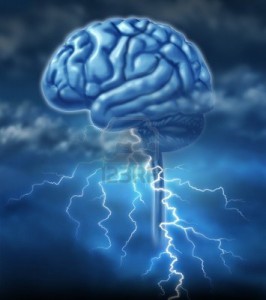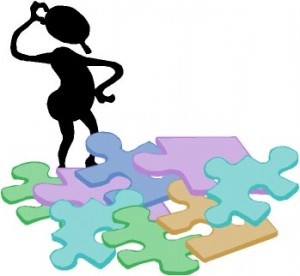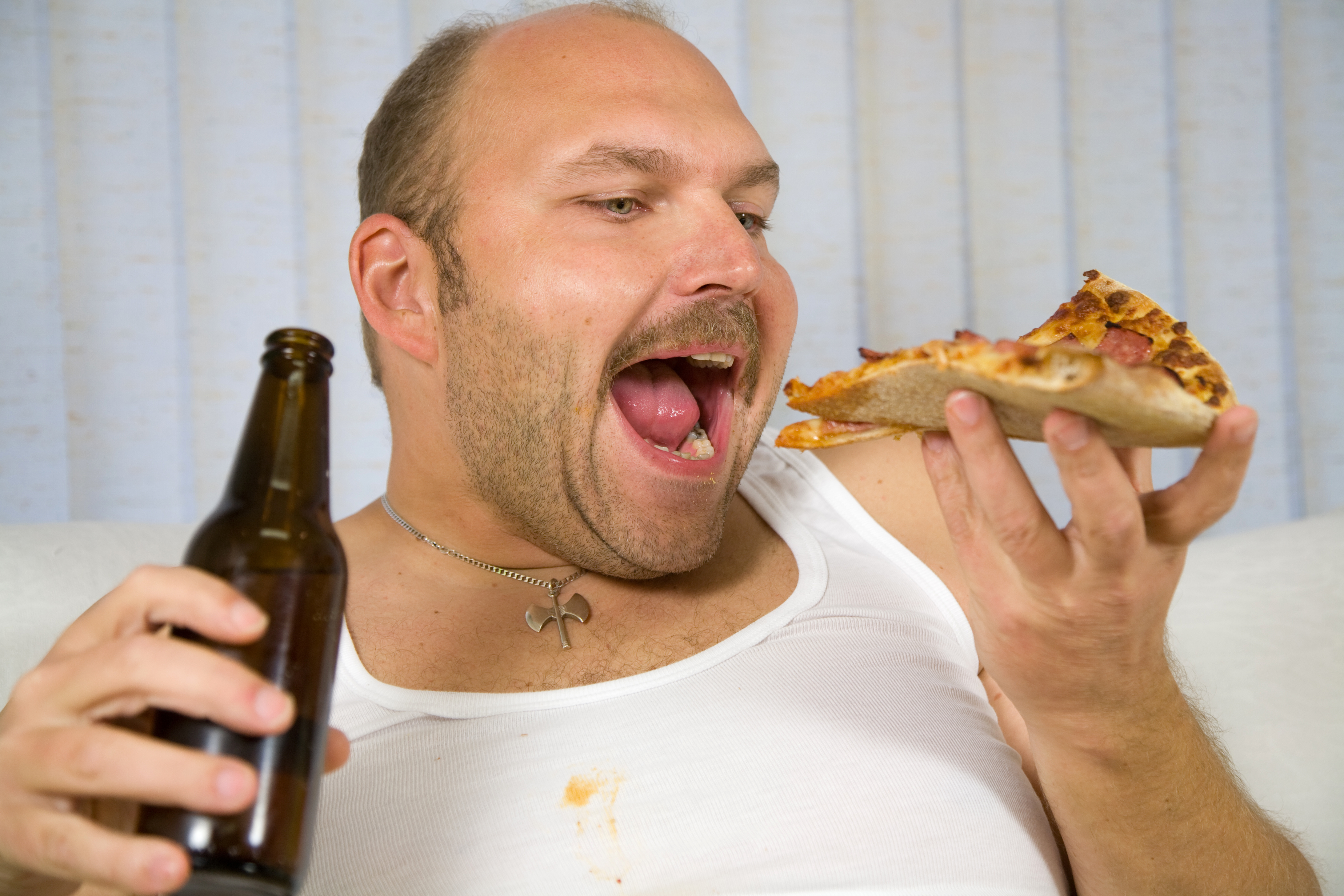The Formation of a Habit
We all have things that we habitually do throughout the day. These are things we’ve done time and again over the course of many weeks, months and years. They are the things that no longer require any conscious thought or attention. We do them because they are familiar, they feel comfortable, and come to us effortlessly.
You might have things you habitually do, emotions you habitually experience, decisions you habitually make, words you habitually use, thoughts you habitually think, behaviors you habitually indulge in, and goals you habitually set. These are just some examples of the habits you have conditioned into your psyche over the years.
Some of your habits are empowering and helpful because they support the objectives you would like to achieve. However, there are other habits that are limiting and unhelpful. These habits tend not to support the desired outcomes you had in mind.
On the surface, anything you repeatedly do, think, feel or say over and over again shapes your habitual patterns of behavior. However, to truly understand what it takes to form a habit, we will need to dig deep into you psyche and explore the process of how your brain makes associations.
 Neural Associations
Neural Associations
Let’s briefly dig beneath the surface of your psyche and explore how a habit comes to life.
Whenever you have a “life experience” that experience gets stored as a set of memories in your brain. Some of these memories you will recall, however other memories will be of an unconscious nature. Your Conscious Brain filters out what’s most important, and only brings the most important things into your conscious awareness. Everything else is stored within the Subconscious Mind for processing.
As you go about your days, you will naturally come across things that stir a wide variety of emotions. Some of these emotions will be pleasurable, while other emotions will be painful. The higher the intensity of the pain and pleasure you experience the more memorable the experiences become.
When your brain has an emotional experience, it begins to form a neural network of associations that help it make better sense of the world. These neural associations form as the brain tries to associate present circumstances to past experiences. In other words, it delves into its data-bank of memories and tries to make sense of present circumstances by taking into account other similar experiences you might have had in the past. When it finds something related, it connects the cells that are associated with your past memories to the cells associated with your present circumstances. Moreover, the brain looks for triggers and related pieces of information that help it better understand cause-effect relationships between different events, pieces of data, and the emotions you are experiencing. It does all this by habitually asking the following set of questions:
What past experience is consistent with my present circumstances?
What is occurring at the same time as this emotion I am feeling?
What is unique about this situation/stimulus?
As your brain finds the answers to these questions, it forms connections between neurons in the brain. These connections form associations of related pieces of information, experiences and memories. In this way, the brain has a better understanding of the world, of your life, and of your circumstances. Then based on this data it makes assumptions about how things are, about how they have been, and about how they should be in the future. Now of course assumptions are only opinions about things; they have no basis in reality. The brain after all only has a limited amount of references/memories to work with. And it must judge things on this limited amount of information it has at its disposal.
Over time, as the brain makes more and more connections between related things, the stronger the neural network of cells becomes. And the stronger this network becomes, the easier it is for the brain to keep linking other similar experiences to this neural network. All these connections form the foundations of strong “habits-of-mind” that make it easy to do certain things, to think a certain way, to emotionalize an experience, and to indulge in a specific type of behavior.
Your brain does all this hard work below the surface of conscious awareness because it seeks familiarity, comfort and certainty. It learns about what you value as being most important resulting from what you tend to focus on throughout the day. And it’s these “most important things” that form the foundations of your habitual patterns of behavior.
You do things one way and not another way because your brain has learned that doing things “this way” is more important than doing things “that way”. The same applies to your thoughts, emotions, and the words you use to express yourself.
Your brain’s main objective is to help make your life easier. It does this by automating the “most important things” you do, say and think. This is very helpful because it means that you no longer need to think, do or say certain things. These “things” just become automatic and natural. Now, of course these “things” might not be helpful or in your best interests. However, the brain doesn’t distinguish between what is good or bad for you. It simply follows your “attention”. Where your attention goes, that’s where your brain flows — for better or worse. Therefore if over the years you have created some unhelpful habits, then that’s primarily because of your focus and attention. You have chosen to focus on specific things in a certain way; you have chosen to interpret life in a certain way; and you have chosen to indulge in certain activities and not in other activities. All this has provided your brain with the references it needs to make sense of what’s most important to you.
Your brain then takes all these references/experiences/memories it has collected and associates them with other similar references/experiences/memories. Combining all these things together forms stronger neural pathways in the brain. In other words, the next time you do something or indulge in a specific kind of behavior, the easier it will be to indulge in this behavior because the brain already has the necessary neural networks in place that support that behavior. And over time the more you do things a certain way, the stronger those networks become, and the less you need to think about what you’re doing consciously. And what initially started out as a random behavior, has now become a fully integrated habit.
 The Highway Analogy
The Highway Analogy
Given all this, it’s easy to see how habits are very difficult to break. Your brain has put all this effort into finding out what’s most important to you. As such, it has gone the extra mile to connect all these related experiences in your head that help support the things that are most important to you. These neural pathways grow strong and become so established that indulging in these habits becomes easy and effortless. You no longer need to put any thought into things, and as such your life becomes a breeze.
One day you suddenly decide that you no longer appreciate the work that your brain has put into constructing this habit. Instead, you want to establish a new habit. However, you do realize that this won’t be easy? Remember that your brain does not like change. It enjoys comfort, familiarity and certainty. This new habit that you would like to create isn’t familiar and brings with it a lot of uncertainty. Your brain will naturally resist this urge, not because it has a mind of its own and doesn’t want you to establish this new habit. It resists the urge to make these changes because it’s just far easier to use a “highway” as a road, then it is to build a new road from scratch.
Your current habit is built on a very solid neural network highway that was constructed over time as more and more connections and associations were made within your brain. It’s just effortless for thoughts to travel down this highway. The road here is smooth and quick. Why would you want to travel on any other surface?
The new habit that you would like to establish doesn’t yet have a road. It might just have an old worn-out overgrown path filled with potholes and mud. To get your new desired habit down this path will take a great deal of effort and concentration on your part. Of course it can be done, but it will not be easy — at least not initially.
To establish a new habit your brain will need to do two things. First it will need to stop using the highway network it created for the old habit. And secondly, it will need to construct a new road surface for the new habit you want to establish. To do this it will need your help. It will need you to supply it with the right materials. These materials come in the form of new experiences, thoughts, words, emotions, behaviors, etc.
Your brain must once again learn from what you focus-on and give your attention to throughout the day, then use that information to build a list of priorities that will help it to determine what’s most important to you. As such, it will make connections with other similar experiences from the past (if they exist), and this will go into building the foundations of a new highway network for this new habit. However, this isn’t something that can be built overnight. It will take time, and it will require that you consistently supply it with the relevant materials that help support this construction project.
Over time, the more you use your new highway network, the stronger it becomes, and the easier your thoughts travel along this new road surface. At the same time, anything you don’t use you lose. This is of particular significance to your old habit. This highway network was once strong, however if left unused for a while, the road surface will crack, weeds will grow, and the highway will eventually turn into a dirt path. This is very significant because it means that:
- Courage unused diminishes.
- Discipline unexercised wanes.
- Love unshared dissipates.
Because your brain established its network of connections and associations based on what it understands is most important to you, it will as a result only focus on supporting and building connections that are related to these things. It will therefore ignore all other connections, thereby allowing them to rot away. As such, what you don’t use, you lose. If you don’t indulge in something, you will eventually get out of the habit of indulging in that “thing”. This is of course good news and at the same time bad news. It’s good news if you want to eliminate unhelpful habits, however it’s bad news if you lose connection with the habits that help support your goals and objectives.
Given all this, is it any surprise that the habits-of-mind you create form the foundations of your creativity (or lack of it); determine your level of happiness; or build your intelligence and your strength of character? Everything you do is built upon your “habits-of-mind” — for better or worse. However, anything you do is still a choice you make. You can either choose to make this choice or you can choose something else. It’s up to you to decide.
 The Role of Anchors in Habit Formation
The Role of Anchors in Habit Formation
Anchoring is an Neural Linguistic Programming (NLP) term that works on the premise that certain memories and emotional states are triggered as a result of specific stimuli that are present within the internal or external environments. In other words, anchors are in some ways captured feelings, emotions, and memories of events, places and things. These feelings, emotions and memories might lie dormant for long periods at a time, however at one point or another they could come to the surface in response to very specific stimuli present within the internal or external environment.
All this is very relevant to the formation of your habits because many of the habits you indulge in are probably triggered by very specific events and/or circumstances that automatically put you in a frame-of-mind that supports that habit. You might for instance be in the habit of overeating. However, you only tend to overeat when you watch television. Therefore, your television is the anchor that triggers higher food consumption. Or, you might overeat whenever you experience a certain emotional state. Experiencing this emotion automatically triggers very specific kinds of behavior within you that encourages you to reach into the fridge and eat food. Therefore, this emotion you are experiencing is the anchor for the habit of overeating.
But how in the world do these anchors form in the first place?
The Formation of Anchors
Remember how your brain takes into account what you focus on most of the time, and then it processes this information in order to determine what’s most important to you? Well at the same time, your brain asks a very specific question. That question is:
What is occurring at the same time as this emotion I am feeling?
Your brain tries to look for shortcuts that might help it to better understand the world you live in. As such, it will wherever possible try to make sense of this world by looking for patterns and for cause-effect relationships. Your brain will therefore do two things:
- It will identify what it is you are focusing on by looking for things within your environment that you are giving your attention to.
- It will then take into account the emotions you are experiencing in that particular moment.
The brain will take this information and try to make sense of the stimuli presented before it. As the brain tries making sense of this information, it tries to build an overall picture of what is happening. It will do this by looking for patterns and cause-effect relationships. Using this information it will make quick assumptions about how things are and what caused these things to be this way. As such, your brain will take your current emotional experience and link the “cause” of this emotion to whatever stimuli is present within the internal or external environment.
The external environment is anything outside of you including people, places, circumstances, things, and anything else that comes through your five sensory organs. The internal environment is anything inside of you, which might include images, self-talk and the feelings you internalize.
Let’s say for instance that you’re at a funeral. Someone close to you has passed away. You are in the process of grieving for this loved one. All these emotions of sadness are circulating through your body. And as all this is going on “internally” your family and friends come up to you and touch your shoulder gently with the palm of their hand and tell you how sorry they feel. Over the course of the funeral you are touched on the shoulder in exactly the same way many times over by a variety of people.
Now many years later, with the funeral of your loved one now a distant by still a painful memory, you are finally enjoying your life once again. You are having fun, sharing love and making the most of every moment you have. You are feeling happy and fulfilled; that is until the moment someone touches you on the shoulder in exactly the same way all those people touched you years ago at the funeral. All of a sudden a flood of memories come rushing back and — for no apparent reason that you are aware of — you suddenly feel sad and miserable once again.
Feeling sad and miserable just doesn’t make any sense. You have so much to be positive and happy about, so many things to enjoy, and so much love to give. Why in the world would you suddenly be feeling this way?
You are feeling this way because this person triggered an emotional anchor within you through the act of touching your shoulder. This subsequently released a flood of negative emotions that have put you in a sad state-of-mind. You never realized at the time that the gentle touch on the shoulder — by people with good intentions — created a habitual emotional anchor that connected the act of “touching the shoulder” to the emotion of grief and sadness. In other words, every time your shoulder is touched in this way, these emotions will immediately come to the surface and you will feel miserable without fully understanding why this is happening.
The brain establishes emotional anchors when a stimulus is consistent, unique and simultaneous. This stimulus can be anything from people, objects, events, the weather, and literally anything that comes through sensory experience (like the touch of the shoulder in the previous example).
The brain of course doesn’t anchor everything. It chooses what things to anchor in respect to the level of importance you give to those things. And your brain determines what’s important by the amount of emotion you associate to certain things. Therefore, when you have a very strong emotional experience, the brain will try to make sense of this experience by associating this emotion with specific things within your environment. In other words, it looks for patterns and cause-effect relationships. As such, your brain associates certain things within your environment as the “cause” of your emotional feelings, which are often tied to the pain-pleasure response.
Once the emotion has been linked to a specific trigger, you no longer need to make an effort to experience this emotion because the trigger is directly interpreted by your nervous system — thereby bypassing conscious thought. As such, you receive a touch on the shoulder, and this automatically puts you in a very different state-of-mind that’s based on how you have been conditioned.
All this is very significant when it comes to developing new habits and/or releasing the hold that unhelpful habits have over your life. It’s significant because habits are nothing more than anchors that you have established over time. There are certain and specific things that trigger these habits throughout the day, e.g. emotions, thoughts, self-talk, behaviors and external things. Therefore to eliminate these habits from your life, you simply need to eliminate the triggers, and then establish new habits by creating new triggers that will instantly put you in the frame-of-mind aligned with that specific habit.
Of course, all this sounds simple on the surface, however it will require some work. Remember that habits are not easy to change, however acquiring an understanding of how the anchoring process works can certainly help you focus on the right things moving forward.
 Types of Anchors
Types of Anchors
All anchors you experience are tied to the five senses. You can therefore experience anchors in a variety of ways. For example:
- Visual anchors can come in the form of colors. There will for instance be certain colors that will make you feel one way, and other colors will make you feel another way. Visual anchors can also be tied to anything physical. If you can see it, then it can most certainly be anchored.
- Auditory anchors can come in the form of music. When for instance you listen to a song, all of a sudden a flood of memories from another time come rushing back into conscious awareness.
- Kinesthetic anchors can come in the form of touch. For instance when someone hugs you it can immediately make you feel a certain way.
- Olfactory anchors come in the form of smells. These anchors can be triggered by different kinds of smells within your environment. These smells can immediately bring you back to another time and/or place that’s associated with that smell.
- Gustatory anchors come in the form of a variety of tastes. You might for instance eat something, and the taste of this food will remind you of something else and all of a sudden you are feeling an unexpected emotion that you hadn’t felt for a while.
Given these examples, it’s easy to see what a profound impact different kinds of anchors can have on your emotional life and habits. At times it might even seem as though life is not so much about “choice” but rather about the conditioning you have received over a lifetime. For instance when you were a child a dog might have suddenly scared you with a ferocious bark. From that moment on you have associated a dog’s bark with fear. What’s even worse is that over time you have conditioned yourself to not only fear the dog’s bark, but to also fear the dog. As such, every time you see a dog on television or in a photograph you begin feeling uneasy. The visual representation of the dog and the auditory sound of the dog’s bark have been anchored into your nervous system and interpreted as “fear”.
This example of “anchor creation” is quite commonplace. It occurs all of the time when you are at a peak emotional state — that is when you are most vulnerable. But no matter how gloomy this might seem, you can break any unhelpful anchoring cycle by learning more about the conscious anchoring process.
 The Anchoring Process
The Anchoring Process
Anchoring occurs at an unconscious level throughout your life, however it’s also something you can do consciously and with purpose to help you establish more productive and helpful habits that support the goals and objectives you would like to achieve. You can for instance purposefully create an anchor that will help trigger productive and learning states, or you can create anchors to help you overcome fears, insecurities, and other unhelpful emotions.
To establish an anchor you need four key elements:
- An anchor word.
- Some kind of physical pressure.
- Peak emotional intensity.
- Repetition.
When establishing an anchor you will need to create a word that will help you trigger this anchor. This can be any word or a combination of words that makes sense to you and for the new habit that you would like to establish. It can come in the form of a simple “yes” or “I can do it” statement.
Once you have settled on a word, you will need to create a physical sensation somewhere on your body. This involves putting physical pressure of some-sort on a part of your body such as a finger, earlobe, nose, etc. The pressure you put on this area must be unique. In other words, it must be a physical sensation that you wouldn’t normally experience. For instance touching an earlobe is a good example because it’s probably not often a place you physically touch yourself throughout the day.
When you create this anchor you need to be in a peak emotional state. This means you must be fully absorbed in the emotional experience you would like to create when you trigger this anchor.
The fourth requirement is repetition. In order to create an anchor, you will need to move through the anchoring process several times. That’s the only way to establish a new habit. Repetition is the key.
If you recall our previous discussion about how an anchor was created at a funeral, you will find that at that funeral there were words used, there was physical pressure, and the person was at a peak emotional state. Likewise, we are attempting to follow exactly the same process when creating a conscious anchor.
Let’s now look at the steps that one must go through to create an anchor on purpose:
- Recall a memory where you are experiencing the desired state you would like to anchor.
- Become fully absorbed, immersed and associated within this memory by recalling the experience with full sensory involvement.
- Create a unique anchor using a word and a physical sensation while you are at the peak of your emotional state (while your emotion is at its strongest).
- Break the state temporarily, then recondition it once again using a different memory or physical location. Repeat this process several times.
- Test the new association you have created by firing-off the anchor (say word and use physical sensation).
If after you fire-off the anchor you are not yet experiencing the emotion you had in mind, then repeat this process once again making sure you fully associate yourself with the desired state you would like to anchor.
Following this process, you might for instance choose to create empowering anchors on all ten fingers. Then whenever required you can just fire-off those anchors throughout the day. That way you no longer need to wait for motivation to feel motivated, or you no longer need to struggle to find the courage to feel courageous, etc.
Have a think about all the things you would like to be by asking yourself:
What kind of person would I like to be?
Maybe you would like to be more creative, patient, courageous, optimistic, curious, productive, persistent, loving, motivated, disciplined, passionate, determined, humble, decisive, assertive, happy, health conscious, etc. No matter what it is, these are nothing more than habits-of-mind. In other words, these are just different ways that you can think about your life and circumstances.
And all these ways of thinking lead to specific kinds of words, decisions, behaviors and actions, which are the things that we all recognize as habits. Therefore, through the process of anchoring you are creating new ways of thinking, doing, and being. You are creating new habits without even realizing it. However, anchoring is only a part of the process of establishing a new habit. Let’s look at the entire process within the next section.
 Transforming an Unhelpful Habit
Transforming an Unhelpful Habit
Do you have unhelpful habits that you would like to rid yourself of? If this is true for you then this seven step process might be exactly what you need to do just that. These seven steps will help you to transform an unhelpful habit into a more productive and helpful habit that supports the goals and objectives you desire to achieve.
Let’s take a look at this process in detail.
Step One
The first step is all about recognition. You must recognize the unhelpful habit that is preventing you from being the person you desire to become. Moreover, you need to identify the triggers associated with this habit. Ask yourself:
What would I like to change?
Do I want to change how I feel, how I behave, or both?
How does this unhelpful habit manifest in my life?
What specific triggers within my external environment and/or within myself are associated with this habit?
How exactly do these triggers occur?
When exactly do these triggers occur?
Where exactly do these triggers occur?
In some cases, eliminating all triggers will help you to successfully eliminate the unhelpful habit. However, there will be scenarios where you won’t be able to eliminate all triggers. In such instances you will need to keep working through the remaining steps of this process.
 Step Two
Step Two
It’s now time to decide what it is you would like to achieve as a result of making this change. This is your desired outcome and it incorporates how you might want to think, act, behave, and what you might want to believe once the change has been made successfully. Ask yourself:
What would I like to be able to do?
How would I like to think?
How would I like to behave?
What would I like to believe about myself, others and/or circumstances?
What new helpful habit would allow me to believe these things, and to think and behave in this way?
It’s important that you are specific and outline exactly the kind of habit or habits that you would like to begin incorporating into your life. These are the habits that will allow you to obtain the desired outcomes you have set for yourself.
Step Three
Having identified what it is you want, it’s now time to gain leverage by using the pain-pleasure principle. This principle will help you to identify both the positive and negative consequences of changing and of not changing your behavior.
As you work through this principle it’s important that you fully associate yourself with the experience of pain and pleasure. In other words, be sure to fully immerse yourself within your emotional experiences as you consider the benefits of changing as well as the negative consequences of not changing. Ask yourself:
Why is it important to make a change?
Why is it important to make a change right now?
What are the negative consequences of not changing?
How will not changing affect me in a multitude of ways?
What are the benefits to making a change?
How will making this change affect my life in a positive way?
Using the pain-pleasure principle in this way will help you create a sense of urgency moving forward. This will encourage you to make rapid changes in a positive direction.
Now, in order to determine whether or not working through the pain-pleasure principle was successful, it’s important that you say to yourself the following three statements:
I acknowledge that something must change.
I acknowledge that I must change.
I acknowledge that I can change things.
If while verbalizing these statements you feel somewhat uncomfortable and uncertain, then you must go through the pain-pleasure process once again and immerse yourself even deeper into the emotions you are feeling when you take into account the consequences of not making this change. Feel these consequences with full sensory involvement and allow yourself to fully associate yourself within this experience.
If on the other hand after reading these statements you feel comfortable and motivated to make these changes, then that means that you’re ready to move onto Step Four of this process. However, be sure to bring this mindset of “change” with you as you work through the remaining steps.
Step Four
The one thing that will hold you back from making positive changes is “yourself”. The unhelpful habit you’ve been indulging in all these years has been deeply ingrained into your nervous system. As such, it’s very difficult to break this pattern without conscious effort. And even with conscious effort it can also be a struggle.
Within Step Four of this process you need to break-out of the cycle of “indulgence”. In other words, you need to find a way to break the hold that your unhelpful habit has over you in order to make room for the new helpful habit you would like to condition into your psyche. To do this you will need to do something that will distract you from indulging in this unhelpful habit the moment you recognize you are indulging in it. You might for instance decide to pinch yourself, or to sing to yourself, or to dance around on the spot, or to hold your breath until you turn blue, or to talk in a funny voice, etc. It doesn’t really matter what it is, as long as it successfully helps distract you from this behavior. In fact, the crazier and the more unusual the distraction, the better it will work. Just let your imagination run wild. ![]()
Step Five
It’s now time to create a new habit that is more positive and helpful. However, it’s important to note, that this new habit must fulfill the needs of the old habit, and must also provide similar benefits that the old habit provided you with. Take these points into consideration while asking yourself the following set of questions:
What is the value of holding onto my unhelpful habit?
What benefits have I been receiving from my unhelpful habit?
What is the positive intention of my unhelpful habit?
How can I derive the same benefits from my new more helpful habit?
If for instance your unhelpful habit made you feel comfortable in some way, then your new helpful habit must also fill this void. Or if for instance your unhelpful habit helped protect you from harm, then your new helpful habit must also do the same, but of course in another way.
Things will not always line-up neatly, and your new habit will not always fill the void left by your unhelpful habit. However, you should always be able to find a middle-ground. And if you don’t, then you might need to establish several new habits that can help fill the void that your unhelpful habit left behind.
Step Six
Now comes time to condition this new habit by creating an anchor. To do this, you must move through the anchoring process outlined within the previous section.
As you work through this anchoring process be sure to take your time. There is no need to rush the process of anchoring. This is something that must be done carefully and with great attention to detail.
Step Seven
Having established your anchor, it’s now time to test the new helpful habit in the real world. To do this, put yourself in a variety of situations where your old unhelpful habit might be triggered. Allow these triggers to occur, and then fire-off the anchor for your new helpful habit. Then rinse and repeat once again until you feel comfortable working with your new habit in these specific situations.
Finally, keep reminding yourself to use this new habit as often as possible throughout your day until you no longer need to think about it consciously.
The Do’s and Don’ts of Habit Transformation
As previously discussed, forming a new habit isn’t an easy process. It is something that will require some work and effort on your part. You may very well need to stretch yourself and push the boundaries of what feels comfortable. But that’s all part of the habit transformation process. You need to go through a period of discomfort before you begin feeling comfortable again once the new habit has been fully conditioned into your psyche. There is no way to avoid or side-step this process — it’s just the way the process of change works. However, there are a few things that will help make your life somewhat easier as you work through the habit transformation process.
